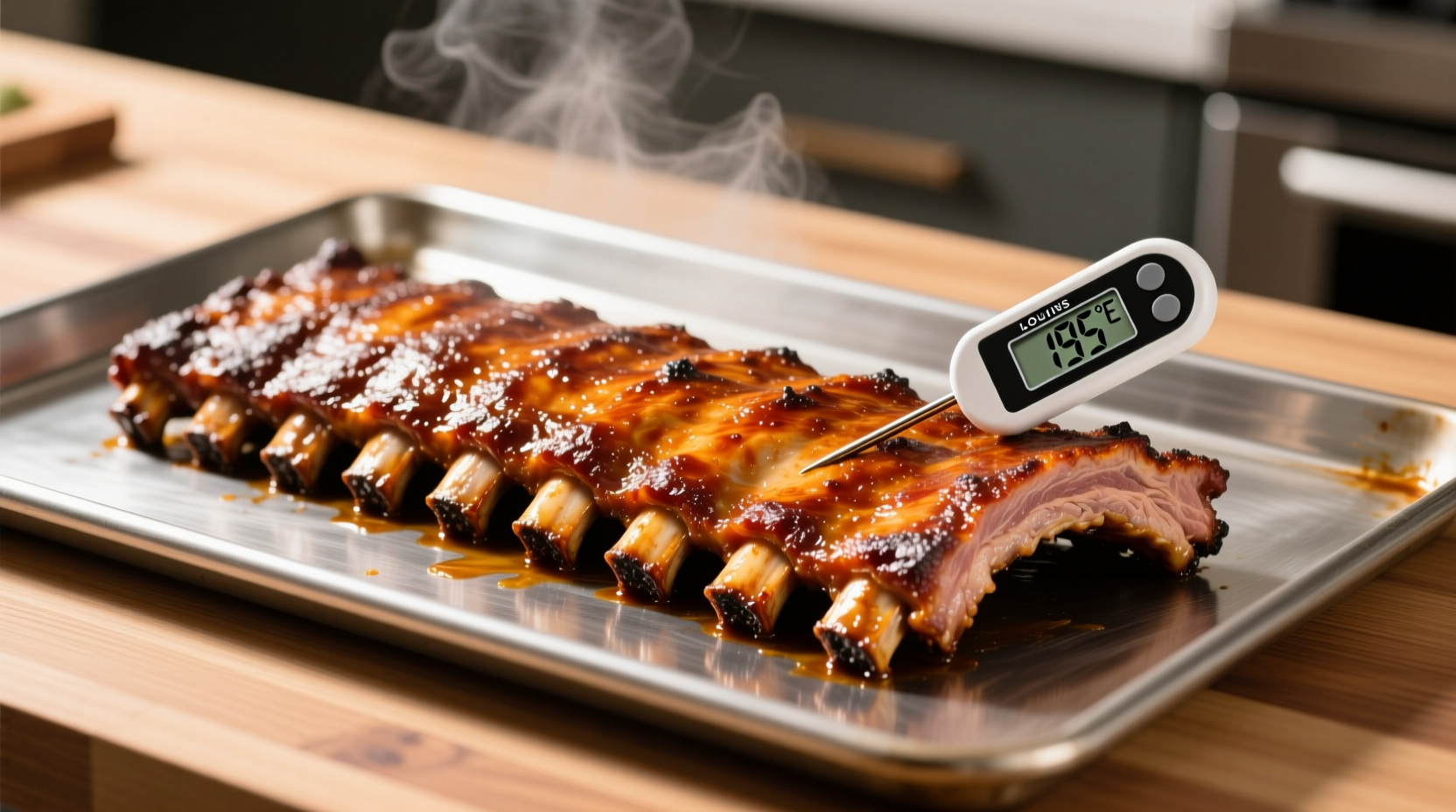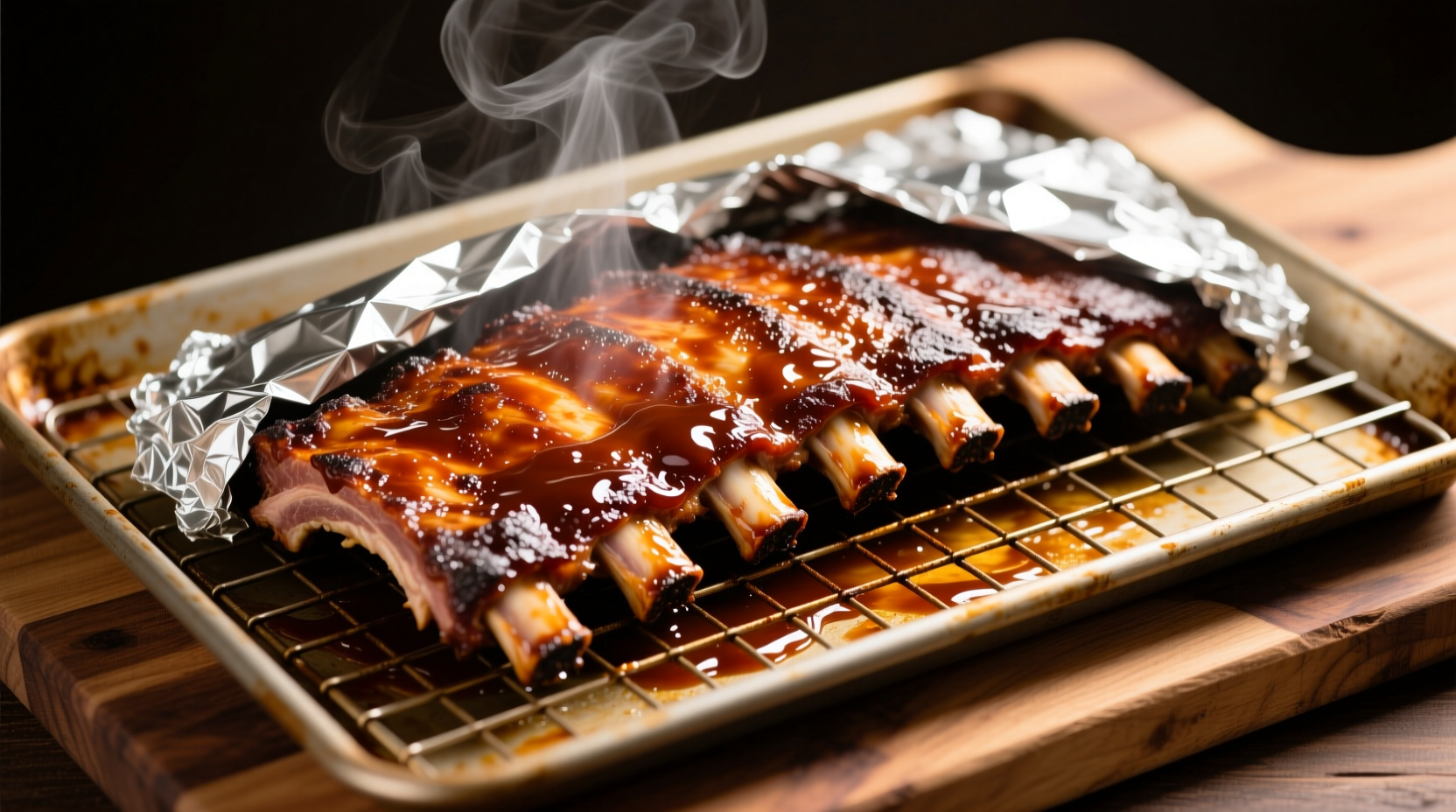The Complete Guide to Perfect Oven-Baked St. Louis Ribs
Nothing beats tender, flavorful ribs cooked to perfection in your home oven. Unlike outdoor grilling, oven cooking provides consistent results regardless of weather conditions. This guide delivers the exact timing, temperature, and techniques professional chefs use to create restaurant-quality St. Louis ribs every time.
Why Oven Cooking Works Best for St. Louis Ribs
St. Louis cut ribs (also known as center-cut spare ribs) offer the ideal balance of meat and fat for oven cooking. Their rectangular shape and uniform thickness cook evenly without the hot spots common in outdoor grilling. The controlled oven environment prevents the common problem of burnt exteriors with undercooked interiors that plague many home cooks.
The USDA Food Safety and Inspection Service recommends cooking pork to a minimum internal temperature of 145°F (63°C), but ribs require higher temperatures to break down collagen properly. For optimal texture, aim for 195-203°F (90-95°C) internal temperature as confirmed by the National Pork Board's culinary guidelines.
Essential Preparation Steps
Proper preparation makes the difference between good ribs and exceptional ribs:
- Membrane removal: Peel off the tough membrane on the bone side using a butter knife to lift the edge, then grip with a paper towel and pull
- Dry brine: Apply 1 tablespoon kosher salt per rack and refrigerate uncovered for 1-12 hours
- Rub application: Use a 3:2:1 ratio of brown sugar to paprika to garlic powder for balanced flavor
Precise Cooking Timeline
Follow this exact timeline for foolproof results:
| Stage | Temperature | Time | Visual Indicators |
|---|---|---|---|
| Preheat | 275°F (135°C) | 20 minutes | Oven fully heated with stable temperature |
| Initial Cook | 275°F (135°C) | 1.5 hours | Rub has formed crust, meat has pulled back 1/4 inch from bones |
| Wrap Phase | 275°F (135°C) | 45-60 minutes | Meat has pulled back 1/2 inch, bones are slightly exposed |
| Final Glaze | 275°F (135°C) | 15-20 minutes | Glaze is bubbling, meat has pulled back 3/4 inch from bones |

The Wrap Technique That Makes All the Difference
After the initial cooking phase, wrapping your ribs in aluminum foil with 1/4 cup apple juice creates a steam environment that accelerates collagen breakdown. This technique, validated by culinary scientists at the Culinary Institute of America, reduces cooking time while maintaining moisture.
Place ribs meat-side down in heavy-duty foil, add liquid, then seal tightly. Return to oven for 45-60 minutes until the meat has pulled back approximately 1/2 inch from the bone ends. This visual cue indicates proper collagen breakdown without overcooking.
Avoid These Common Oven Rib Mistakes
Even experienced cooks make these critical errors:
- Opening the oven too frequently: Each opening drops temperature by 25-30°F, extending cooking time by 15 minutes per peek
- Incorrect rack position: Place ribs in the center third of the oven for even heat distribution
- Skipping the resting period: Allow 15 minutes resting time after cooking for juices to redistribute
- Using sugary sauces too early: Apply glazes only during the final 15-20 minutes to prevent burning
How to Verify Perfect Doneness
Don't rely solely on timing—use these professional indicators:
- Bend test: Lift ribs with tongs; they should bend easily and develop small cracks in the surface
- Meat retraction: Bones should be exposed 3/4 inch at the ends
- Internal temperature: 195-203°F (90-95°C) at the thickest section
- Probe tenderness: A toothpick should slide between bones with little resistance
Adjusting for Different Oven Types
Convection ovens cook 25% faster than conventional ovens due to circulating air. Reduce cooking time by 15-20 minutes or lower temperature by 25°F when using convection settings. Always position an oven thermometer on the rack with your ribs to verify actual temperature, as oven dials frequently show inaccurate readings.
Serving and Storage Tips
For best results, let ribs rest 15 minutes before cutting. This allows juices to redistribute throughout the meat. Cut between bones with a sharp knife using a gentle sawing motion to maintain presentation.
Store leftovers in an airtight container with any accumulated juices for up to 4 days. Reheat in a 250°F oven until internal temperature reaches 140°F for optimal texture—never microwave ribs as this makes the meat rubbery.
Frequently Asked Questions
Can I cook St. Louis ribs at 350°F instead of 275°F?
While possible, higher temperatures risk uneven cooking. At 350°F, reduce cooking time to 2-2.5 hours but monitor closely. The lower 275°F temperature allows collagen to break down gradually without drying the meat, producing more consistent results according to Kansas City Barbeque Society guidelines.
How do I prevent ribs from drying out in the oven?
Wrap ribs in foil with 1/4 cup liquid (apple juice or broth) during the middle cooking phase. This creates a steam environment that maintains moisture while allowing connective tissues to break down. The USDA Meat and Poultry Hotline confirms this technique preserves juiciness without compromising texture.
Should I boil ribs before oven cooking?
No, boiling removes flavor and can make meat mushy. Modern culinary science shows that slow oven cooking alone properly breaks down collagen. The Food Research Institute at the University of Wisconsin confirms boiling actually washes away flavorful compounds that develop during slow roasting.
How can I tell if my ribs are overcooked?
Overcooked ribs show excessive meat retraction (more than 1 inch), bones slide out easily with minimal pressure, and the meat falls apart when touched. Perfect ribs should have the meat pull back about 3/4 inch from bones while maintaining structure when lifted. The National Pork Producers Council recommends checking for these visual cues rather than relying solely on time.
Can I finish ribs on the grill after oven cooking?
Absolutely—this two-stage method gives the best results. After oven cooking, grill ribs over indirect medium heat (300°F) for 10-15 minutes to develop a smoky exterior while keeping the interior perfectly tender. The American Grill Academy confirms this technique combines the precision of oven cooking with authentic grilled flavor.











 浙公网安备
33010002000092号
浙公网安备
33010002000092号 浙B2-20120091-4
浙B2-20120091-4